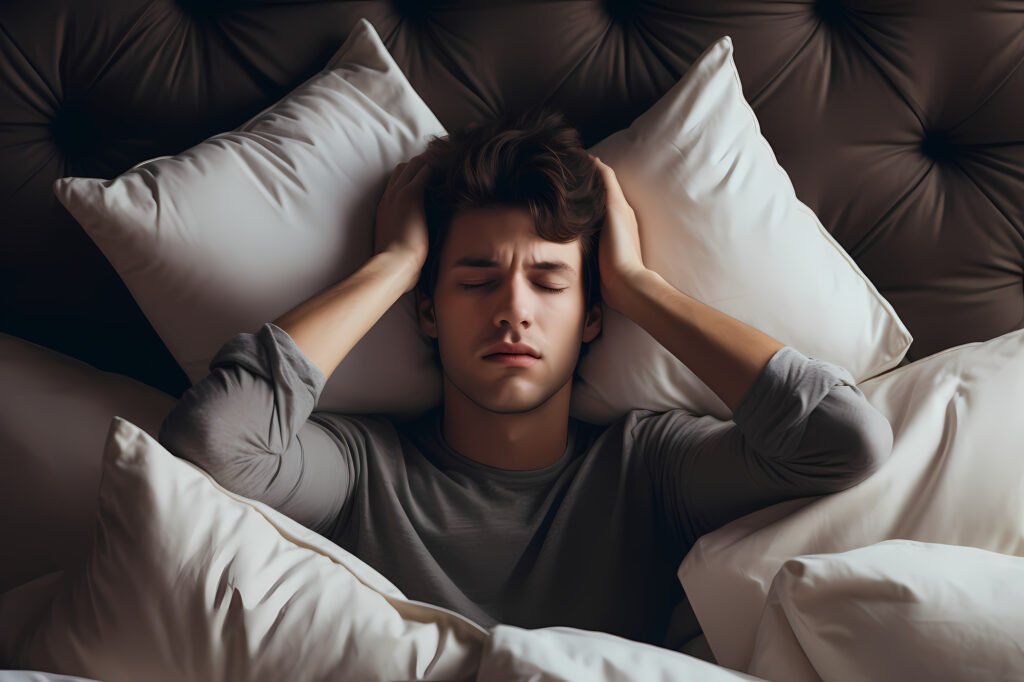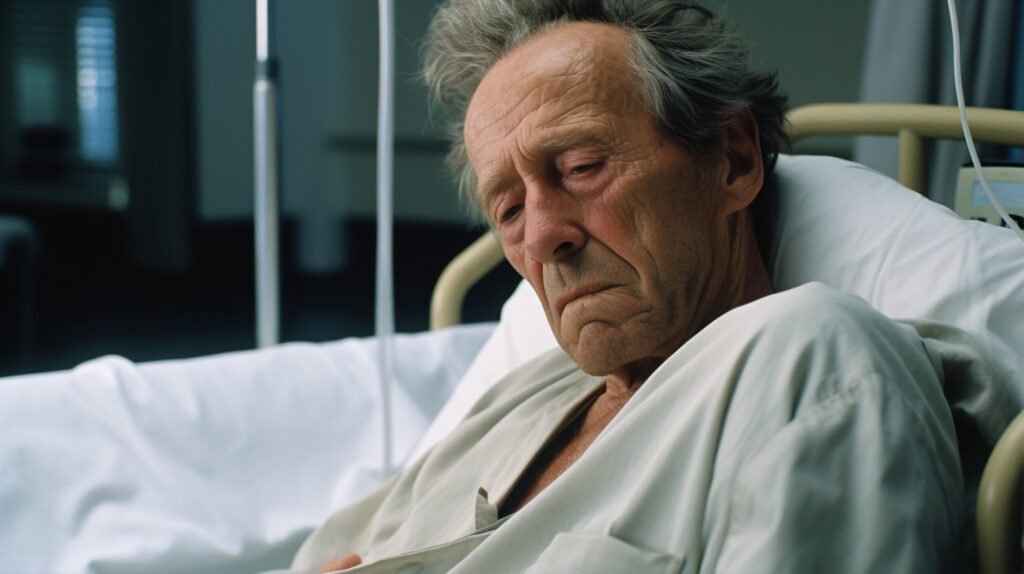Introduction
In the stillness of the night, a seemingly ordinary act takes on a mysterious dimension—breathing. As we surrender to the embrace of sleep, our bodies embark on a voyage through the realms of dreams and rejuvenation. However, for many, this nocturnal journey is disrupted by an invisible adversary known as sleep apnea.
Imagine a scenario where the breath, a life force we often take for granted, becomes a symphony of irregular pauses, disrupting the tranquil melody of the night. This is the enigmatic landscape of sleep disorder, a condition that unfolds silently, leaving individuals grappling with a paradoxical dilemma: the very act that sustains life becomes a source of nocturnal turmoil.
In this exploration, we peel back the layers of the night, venturing into the shadowy corners of interrupted slumber. Beyond its medical definition, this is a captivating enigma that intertwines with the fabric of our subconscious, affecting not only the physical but also the psychological well-being of those it touches.
Join us as we embark on a journey to decipher the whispers of the night and unravel the intricacies of sleep apnea—an affliction that challenges our understanding of rest, blurring the lines between the conscious and the subconscious. Together, we’ll navigate the labyrinth of breath, exploring the impact of this sleep disruption on the silent interplay between body, mind, and the ethereal landscape of dreams.
Signs and Symptoms

Unveiling the Silent Culprit: Recognizing the Signs of Sleep Apnea
Sleep apnea is a common yet often undiagnosed sleep disorder that can significantly impact an individual’s health and well-being. Characterized by interruptions in breathing during sleep, sleep apnea poses risks that extend beyond mere fatigue. Understanding the signs and symptoms is crucial for timely diagnosis and effective management.
The Telltale Signs
-
Loud Snoring:
One of the primary indicators of sleep apnea is persistent and loud snoring. While occasional snoring is normal, particularly among those who sleep on their backs, habitual and disruptive snoring may signify an underlying issue.
-
Pauses in Breathing:
Individuals with sleep apnea may experience moments where breathing halts for a brief duration during sleep. These pauses, known as apneas, can last for seconds to minutes and may occur multiple times throughout the night.
-
Excessive daytime sleepiness:
Unexplained and persistent daytime sleepiness is a red flag for sleep apnea. Despite spending a seemingly adequate amount of time in bed, individuals with sleep apnea often wake up feeling tired and struggle to stay awake during the day.
-
Morning Headaches:
Waking up with a headache is another potential symptom. The repeated interruptions in breathing can lead to a drop in oxygen levels, causing headaches upon waking.
-
Difficulty Concentrating:
Cognitive impairment, difficulty focusing, and memory issues may arise as a consequence of interrupted sleep patterns associated with sleep apnea.
-
Irritability and mood changes:
Sleep apnea can also impact mood, leading to increased irritability, mood swings, and a general sense of frustration.
Recognizing and understanding the signs of SA empowers individuals to take control of their sleep health. Early detection and intervention can significantly improve the quality of sleep, enhance overall well-being, and reduce the potential health risks associated with untreated sleep apnea. Don’t let sleep apnea go unnoticed; prioritize your health by paying attention to the signals your body is sending.
Causes and Risk Factors

Sleep apnea is a sleep disorder characterized by interruptions in breathing during sleep. These interruptions, known as apneas, can occur repeatedly throughout the night, leading to disrupted sleep and potential health complications. Understanding the causes and risk factors associated with SA is crucial for effective management and prevention.
Causes
-
Obstructive Sleep Apnea (OSA)
One of the primary causes of sleep apnea is OSA. This occurs when the muscles in the throat relax excessively during sleep, leading to a partial or complete blockage of the airway. As a result, the individual experiences breathing pauses, often accompanied by loud snoring.
-
Central Sleep Apnea (CSA)
Central sleep apnea is less common and occurs when the brain fails to send the proper signals to the muscles that control breathing. Unlike OSA, CSA is not typically associated with physical obstructions in the airway.
-
Complex Sleep Apnea Syndrome (CSAS)
CSAS, also known as treatment-emergent central (SA), is a combination of both OSA and CSA. It often develops in individuals with pre-existing OSA who undergo treatment with continuous positive airway pressure (CPAP) therapy.
Read Also: Home Gym Havens: Crafting Your Ideal Fitness Space
Risk Factors

-
Obesity
Excess weight, especially in the upper body, increases the likelihood of fat deposits around the neck and throat. This additional tissue can contribute to airway obstruction, leading to OSA.
-
Age and Gender
Sleep apnea is more prevalent in older adults. Additionally, men have a higher risk than women, although the risk for women increases if they are overweight, and it may be comparable after menopause.
-
Family History
Genetics may play a role in sleep apnea risk. Individuals with family members who have the condition may be more susceptible to developing it themselves.
-
Smoking and Alcohol Consumption
Smoking and excessive alcohol intake can increase muscle relaxation in the airway, contributing to the likelihood of sleep apnea episodes.
-
Medical Conditions
Certain medical conditions, such as hypertension, diabetes, and chronic nasal congestion, can elevate the risk of sleep apnea.
Recognizing the causes and risk factors associated with SA is essential for early detection and effective management. Lifestyle modifications, weight management, and medical interventions, such as CPAP therapy, can significantly improve sleep apnea outcomes. If you suspect you or someone you know may be experiencing sleep apnea, seeking professional medical advice is crucial for a proper diagnosis and appropriate treatment.
Diagnosis and Screening
To diagnose sleep apnea, it’s crucial to be aware of the common signs and symptoms. Excessive daytime sleepiness, loud snoring, choking, or gasping during sleep, and difficulty staying asleep are indicative of potential. However, a proper diagnosis requires a comprehensive evaluation.
The Diagnostic Process

Sleep Studies: A Vital Tool
Polysomnography, commonly known as a sleep study, is a key diagnostic tool for sleep apnea. During this overnight test, various parameters are monitored, including brain activity, eye movement, heart rate, muscle activity, airflow, and blood oxygen levels. This comprehensive data helps healthcare professionals assess the severity of SA and tailor treatment plans accordingly.
Home Sleep Apnea Testing
In some cases, healthcare providers may recommend home sleep apnea testing for those with suspected moderate-to-severe (SA). This portable monitoring device allows individuals to sleep in the comfort of their homes while collecting essential data. However, it’s crucial to follow specific guidelines provided by healthcare professionals to ensure accurate results.
Screening for Sleep Apnea
Identifying At-Risk Individuals
Effective screening is vital for the early detection of SA, especially among individuals with risk factors such as obesity, older age, family history, and certain medical conditions. Healthcare providers may use various screening tools, questionnaires, and assessments to identify individuals who warrant further diagnostic evaluation.
Collaborative Approach
Given the multidimensional nature of sleep apnea, a collaborative approach involving primary care physicians, sleep specialists, and other healthcare professionals is essential. Integrating sleep-related questions into routine health assessments can enhance the chances of identifying sleep apnea early on.
Treatment Options
Treatment Approaches
-
Lifestyle Modifications
In mild cases, lifestyle changes can make a significant difference. Losing excess weight, avoiding alcohol and sedatives before bedtime, and sleeping on your side instead of your back are simple yet effective strategies.
-
Continuous Positive Airway Pressure (CPAP)
For moderate-to-severe cases of OSA, a CPAP machine is often prescribed. This device delivers a continuous stream of air through a mask, keeping the airways open and preventing pauses in breathing.
-
Bi-level Positive Airway Pressure (BiPAP)
Similar to CPAP, a BiPAP machine provides different pressure levels for inhalation and exhalation. This can be more comfortable for some individuals and is often recommended for those who have difficulty adapting to CPAP.
-
Oral Appliances
Dentists can prescribe oral appliances that help reposition the tongue and lower jaw to keep the airway open. These devices are particularly useful for those with mild-to-moderate SA.
-
Surgery
In certain cases, surgical intervention may be considered. Surgical options range from removing excess tissue from the throat to repositioning the jaw. Surgery is typically reserved for severe cases when other treatments have proven ineffective.
Living with Sleep Apnea

Living with sleep apnea is like navigating through a nightly labyrinth where restful slumber is a coveted treasure, often elusive and occasionally fleeting. As the night unfolds, the sleeper grapples with the capricious dance of interrupted breaths, each snoring a symphony of irregularity. (SA), an enigmatic bedfellow, disrupts the peaceful serenade of dreams, forcing its host into a nocturnal tango with exhaustion. The constant battle between breath and repose transforms the bedroom into a theater of survival, where CPAP machines hum a lullaby of pressurized relief, and the quest for quality rest becomes a journey of resilience. In this challenging odyssey, the waking hours become a tapestry woven with threads of fatigue, resilience, and a relentless pursuit of a restful haven amid the tumultuous seas of interrupted breaths.
Untreated Sleep Apnea Life Expectancy
Reduced life expectancy is a stark reality for individuals with untreated sleep apnea. Studies indicate that this condition can contribute to a higher likelihood of strokes, heart attacks, and other cardiovascular events, significantly diminishing overall life expectancy.
Understanding the Impact
(SA) is more than just a disturbance in one’s nightly rest; left untreated, it can significantly affect life expectancy. Characterized by pauses in breathing during sleep, this condition puts immense strain on the cardiovascular system, leading to a cascade of health issues.
The Toll on Heart Health
Untreated sleep apnea is often associated with hypertension, irregular heartbeats, and an increased risk of heart disease. The persistent lack of oxygen during episodes of interrupted breathing places the heart under constant stress, potentially shortening the lifespan of those affected.
The Importance of Diagnosis and Treatment
Timely diagnosis and effective treatment are paramount to mitigating the risks associated with SA. Continuous positive airway pressure (CPAP) therapy and lifestyle changes can significantly improve sleep quality, reducing the strain on the heart and potentially adding years to one’s life.
Recognizing the impact of untreated sleep apnea on life expectancy emphasizes the importance of seeking professional help. By addressing this sleeping disorder proactively, individuals can not only enjoy better quality sleep but also extend their overall lifespan.
Conclusion
In the final analysis, unraveling the intricate web of sleep apnea reveals a critical understanding of its far-reaching impacts on overall health. This conclusion serves as both a call to action and a source of hope, emphasizing the imperative for early detection and effective management. As we navigate the realm of sleeping disorders, it becomes evident that fostering awareness and prioritizing holistic interventions are key to transforming the landscape of (SA) and ensuring a well-rested future for all.
